GILFORD — A group of parents, brought together through the shared experience of caring for adult children with disabilities, find themselves in the middle of the biggest controversy associated with this town’s annual meeting, scheduled on Tuesday, March 12.
The controversy surrounds Article 27 on the town warrant, which asks voters to authorize the transfer of a 9-acre parcel of town-owned land to The Home Possible Project, a nonprofit founded to create a lasting solution to a big problem: How to ensure adult children will be cared for, especially once their parents are no longer able to provide that care themselves.
Opponents, including an association of homeowners adjacent to the proposed site, say the process has evolved too rapidly for public consideration, and that developing the parcel risks ecological harm.
‘Heroes’
For many years, the question of who would care for their child when they are no longer able to do so themselves has weighed on the minds of Gary and Lisa DiMartino. About five years ago, they started looking around, and saw the existing options were to enroll their son into what amounts to foster care, placing him in the home of another family who agrees to care for him, or sending him to a facility, likely out of state.
They didn’t like either of those options, so they kept looking. They found out about an organization in the Hanover area, known as Visions for Creative Housing Solutions. Visions succeeded in creating residences where adults with developmental disability can live, with needed support, without having to be shipped across the country. Even better, Visions produced a toolkit, a roadmap of sorts, for other groups of families interested in creating the same opportunities in their own communities.
Following that toolkit, the DiMartinos connected with several other families in the same situation, and last year they formed the nonprofit known as The Home Possible Project, with the mission of creating supportive housing in the Lakes Region for adults with developmental disabilities.
Before they could build their first such home, they needed to identify a piece of land. Along with scouring real estate listings, they approached the town, which, it turned out, had a couple parcels that could work. The first offered was on Route 11A, across from the town’s emergency services, but that was deemed as undesirable because of associated noise from fire trucks and police cruisers, and because walking from that property to the village would require crossing the highway.
The second option, by comparison, looked much better. It’s a 9-acre parcel, largely flat, and located at the corner of Alvah Wilson Road and Route 11A. It’s near the town’s public schools, with sidewalks leading into the village.
The selectboard agreed to offer the land to The Home Possible Project for $1, and the families kicked into high gear. They hired a wetlands scientist to study the parcel and identify a 2-acre chunk of it suitable for building. They then worked with the town to put the question to voters, just in time for the warrants to be printed.
Board members of the group said the offer from the selectboard was akin to a prayer answered.
“For us, and from our perspective, the board are heroes,” said Gary. “I know some people don’t like what they did, but for us, they’re heroes. ... The leadership looked at, we know there’s a problem, and there’s a potential solution.”
The offer looks different to the Gilford Forest Estates Community Association, which includes 44 homes and abuts the town-owned parcel. Ray Korber, association president, said the issue surprised him and his association.
“They just arbitrarily decided, amongst the three of them that, you know, we’re just gonna give away this parcel here,” Korber said.
Korber, along with other Gilford Forest Estates board members, said he broadly supports The Home Possible Project’s goals, but disagrees the property on Alvah Wilson Road is a suitable site.
“It’s not a good buildable piece of land,” Korber said, explaining two streams that flow across the property drain water that comes from some 200 acres of land just uphill. Those streams converge at a corner of the property before heading into a culvert that moves the water underneath the state road.
“When folks say that teh property has no value to the town, we would argue strongly against that, because that property serves a function to this community,” Korber said. “The stormwater from that 200 acres drains to that property before hitting that culvert that crosses Route 11A. And when it hits that culvert, there’s only 1,300 feet from there, down to the discharge point, right into Gunstock River. ... That 9 acres has a high value, actually, to the town. It’s not worth nothing.”
Joel Fisher, a member of The Home Possible board, countered that their wetlands scientist identified 2 acres out of the 9 that do not constitute wetlands, and would be suitable for building.
One of many steps
Selectboard Chair Kevin Hayes said getting the voters’ approval for the land transfer is a necessary step, but just one of many that The Home Possible Project will face.
“There has to be a lot of study,” Hayes said. They would need to get approvals from the Department of Environmental Services for wetlands permits, they’d need to get permits to alter the land and to interfere with wildlife habitats, and they would need to get site plan approval from the Planning Board.
Then there’s the cost — Fisher said the Home Possible board is working with an estimate of $4 million, which they would seek to raise through various grants or other public sources, up to and including Congressional appropriations.
Hayes said the town is working to put restrictions on a possible transfer, which would prevent the land from being used for anything except a supportive housing facility developed by The Home Possible Project.
The property has been in town hands since 1973, Hayes said, and appears to have been transferred to public ownership through some sort of land swap arrangement.
“The town has had no use for this property in 50 years, at least in our minds, besides serving as a wetlands area. This is a good use for it,” Hayes said. “I think that overall this is a beneficial use of the property. If the proposal doesn’t go through, the property will then become deeded back to the town. No development will be done, not even clearing, until all the permits and funding will be in place.”






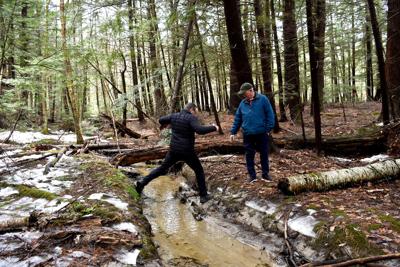

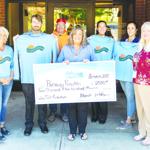


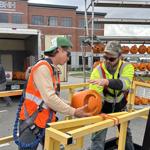




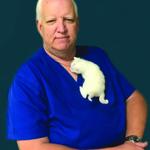
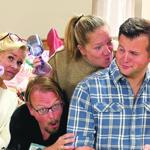
(0) comments
Welcome to the discussion.
Log In
Keep it Clean. Please avoid obscene, vulgar, lewd, racist or sexually-oriented language.
PLEASE TURN OFF YOUR CAPS LOCK.
Don't Threaten. Threats of harming another person will not be tolerated.
Be Truthful. Don't knowingly lie about anyone or anything.
Be Nice. No racism, sexism or any sort of -ism that is degrading to another person.
Be Proactive. Use the 'Report' link on each comment to let us know of abusive posts.
Share with Us. We'd love to hear eyewitness accounts, the history behind an article.